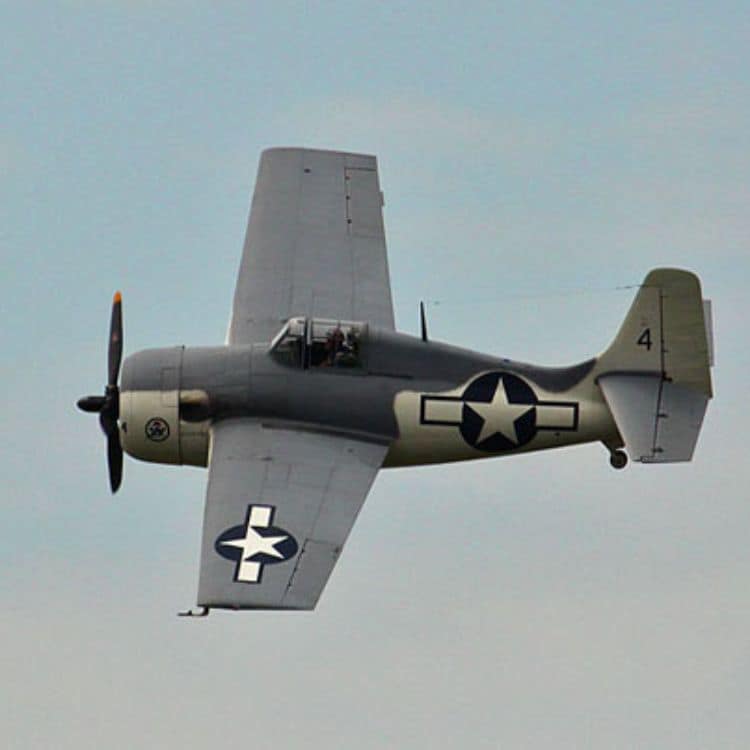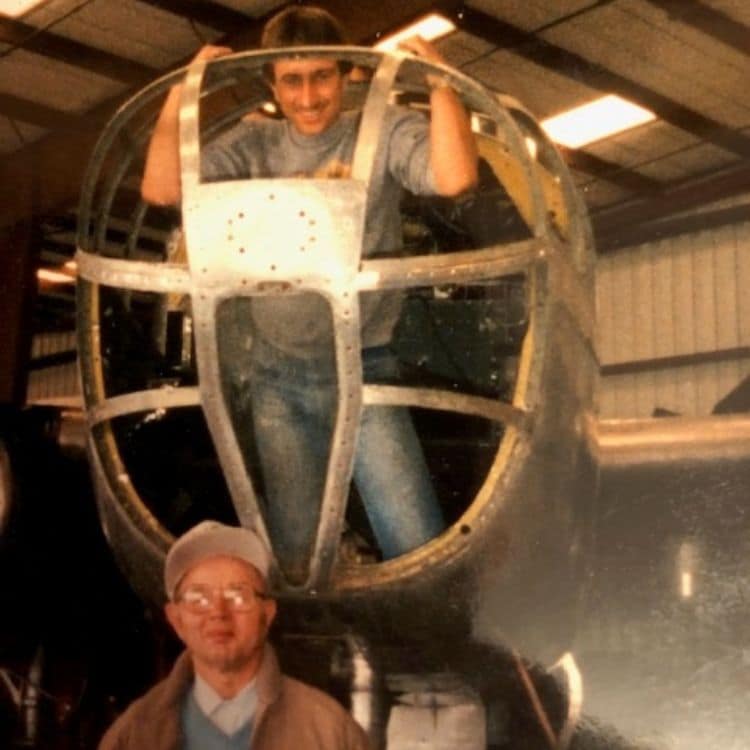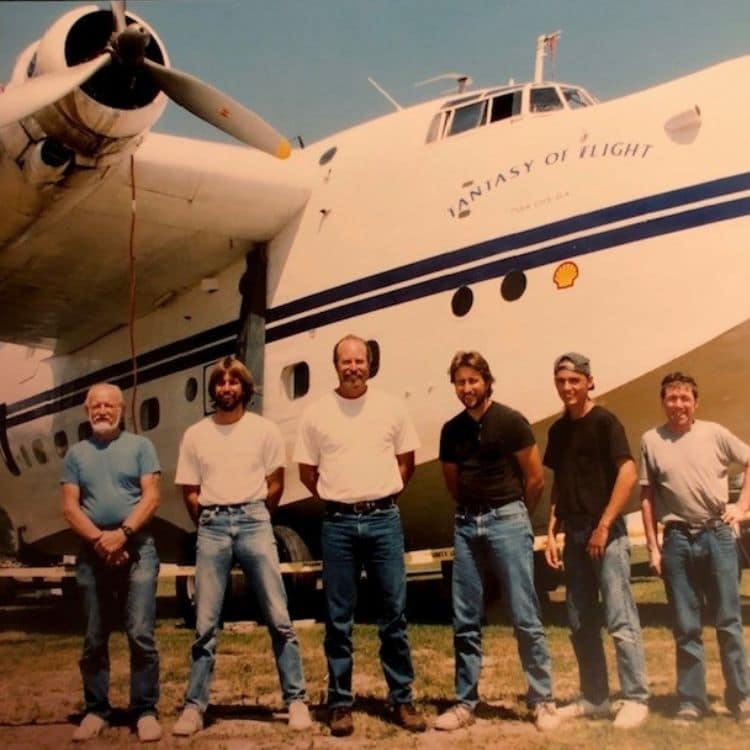

From World War II Restoration to the Skies

College of Aviation instructor Paul Stecewycz shares expert insights and knowledge on the aviation maintenance industry.
Paul Stecewycz, an instructor in the College of Aviation, has long been fascinated by the intricacies of gears, levers and engines. His journey began in childhood, assisting his father with car repairs, working on his bicycle and crafting model airplanes. This early interest in all things mechanical set the course for a remarkable career in aviation maintenance.
A defining moment in Stecewycz’s life came in 1974 when he watched the television show Black Sheep Squadron, which dramatized the heroic exploits of World War II fighter ace Pappy Boyington. The real Corsair aircraft flying across the screen ignited a deeper passion within him — a determination to one day work on historic aircraft.
“The show was fantastic because it was developed before CGI, so all the airplanes were real, and they had several corsairs in the air that Boyington flew,” he recalls. “After watching it, that was it for me... I was sold. I was determined to work on historic aircraft somehow, some way.”
From Dreams to Reality
Following high school, Stecewycz pursued a private pilot’s license but soon realized his true calling lay not on the flight deck but amidst the engines and fuselages of historic airplanes. He was drawn to the Valiant Air Command in Titusville, Florida, where he eagerly participated in airshows and deepened his connection with World War II aircraft — solidifying his career path.
This early involvement in the aviation field guided his decision to enroll in the Aviation Maintenance program at Embry-Riddle Aeronautical University, attracted by the vibrant community in Daytona Beach, Florida.
“I came to Embry-Riddle with the sole goal of working on World War II airplanes. I had no interest in anything else; it was strictly that. I was unsure how I would do it, but I was determined to make it happen,” he said. “After graduating, I found a few shops down in New Smyrna Beach, Florida, working on older airplanes and managed to secure a position. As I got that opportunity, I proved to them my capabilities and grew my niche and expertise in this field.”
His extensive hands-on experience continued with historic aircraft restoration at Fantasy of Flight, home to the world’s greatest collection of vintage aircraft, where he spent many years refining his craft.
“Working on older aircraft requires patience and resourcefulness due to limited information and long project timelines. It’s about learning, problem-solving and not rushing the process,” he said.
He credits Embry-Riddle and his tenure at Fantasy of Flight with teaching him invaluable lessons in patience, resourcefulness and the importance of working with limited resources.
“There were a lot of experiences and challenges that I have experienced over the years working,” he said. “Even though I was involved in many different things, I think the main thing I learned from all this is to have patience. Sometimes, when working on older aircraft, there is little information, and projects take a lot of time. The true goal is taking your time, learning, not getting in a hurry, assessing a situation and going into it with problem-solving.”
Despite any challenges he encountered, his experiences shaped his expertise and deepened his appreciation for the meticulous nature of aircraft restoration. Some of his past projects include restoring a Grumman Wildcat, a World War II fighter, which went on to win an award for Best Naval Fighter at the Sun-N-Fun airshow — and a Stinson L-1 Vigilant, an American liaison aircraft that is only one of two flying in the world today.

The Northrup Grumman F4F Wildcat
From Maintenance and Restoration, Back to Embry-Riddle
After working in the aviation and maintenance industry for almost 35 years, Stecewycz’s experience has led him back to Embry-Riddle — the place where it all started.
Now a respected and valued member of Embry-Riddle’s College of Aviation, Stecewycz brings a wealth of practical knowledge and industry experience to the classroom. His approach is grounded in the “3 P’s” of aviation maintenance: Passion, Patience and Persistence. He instills in his students the necessity of loving every facet of their work, the importance of patient diligence and the need for unwavering persistence in the face of obstacles.
- Passion: You must really love all aspects of aircraft maintenance. Whether you are involved in maintenance, restorations or line maintenance, you need to have an excellent attitude and be 100% passionate about it. Embrace both the good and the bad and all the challenging parts of it.
- Patience: You need to have patience with what you are doing. Taking your time, following directions and working collaboratively with others is extremely important in aircraft maintenance and other parts of aviation.
- Persistence: This is especially important because airplanes don’t always want to cooperate while working on them. You must be persistent, push through the tough times and complete the job.
Through his dedication to these principles, Stecewycz not only equips his students with technical skills but also develops a mindset geared toward enduring success in the demanding field of aviation maintenance and beyond.
The Embry-Riddle Advantage
Embry-Riddle is renowned for its commitment to providing students with unparalleled hands-on experience in the aviation and aerospace field — ensuring that students are not only experts in their field but also skilled professionals ready for the demands of the evolving industry.
“The hands-on experience at Embry-Riddle is expectational, especially in the innovative labs we have on campus. For example, the Structures Lab is where students get to build something from scratch, and for many students, this is their first time having exposure to that,” he said. “It’s rewarding to take a student who has never built anything and walk them through the steps to show them that it is possible and that they can do this.”
Embry-Riddle’s commitment to hands-on learning offers students invaluable opportunities to engage directly with aircraft construction and maintenance, mirroring the real-world experiences Stecewycz values so highly.
Embry-Riddle's Department of Aviation does an excellent job with the fact that a lot of the faculty have industry experience,” he said. “The industry experience adds immense value to the students’ education, bringing a strong aviation background to the classroom.
To the Future Generation

As the aviation industry evolves, Stecewycz emphasizes the need for students to adapt and gain practical experience early on. His advice to aspiring technicians is clear, “build a solid foundation in mechanical work and embrace the rigorous demands of the field with passion, patience and persistence.”
Reflecting on his transition from hands-on aircraft work to teaching, Stecewycz expresses gratitude for the support and camaraderie he has found at Embry-Riddle. The encouragement from colleagues and the enthusiasm of his students made his new role rewarding and fulfilling.
“When I took this position in August, I was somewhat apprehensive because I was coming from an atmosphere of working on airplanes — I genuinely loved what I did — but I decided this was a great opportunity. I thought to myself, can I really do this? Can I really teach? But once I got to Embry-Riddle, I received a tremendous amount of support from the faculty. They are truly amazing,” he said.
“Then I got to meet the students and see the interactions. For us in the AMS department, we work with groups of students for about four months, so we really get to know them. I want to thank everyone here in the AMS department for being so supportive and the students for being so welcoming.”
Stecewycz's influence extends beyond the classroom, with a dedication to hands-on learning and real-world application that ensures students are not only prepared for the technical aspects of their careers but also inspired to innovate and lead in the aviation field for years to come.



